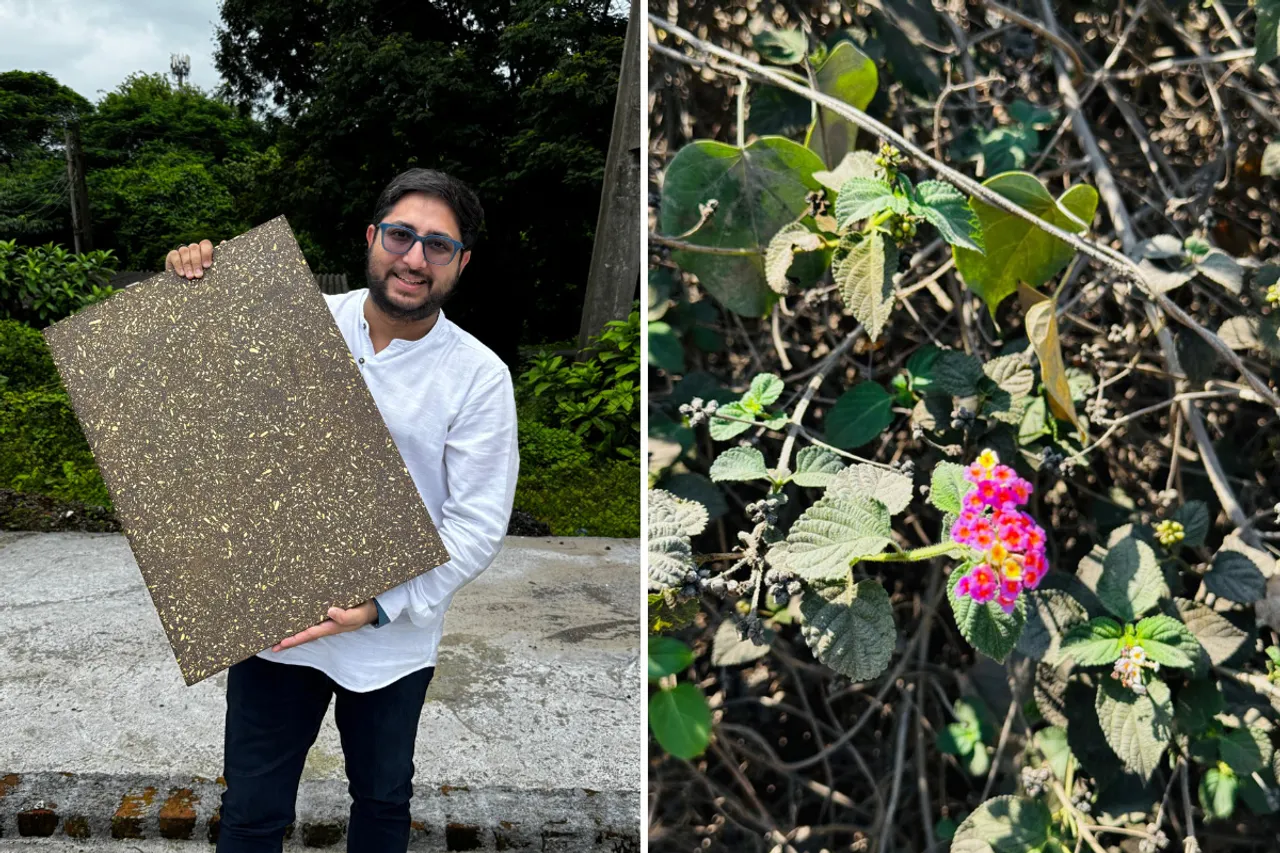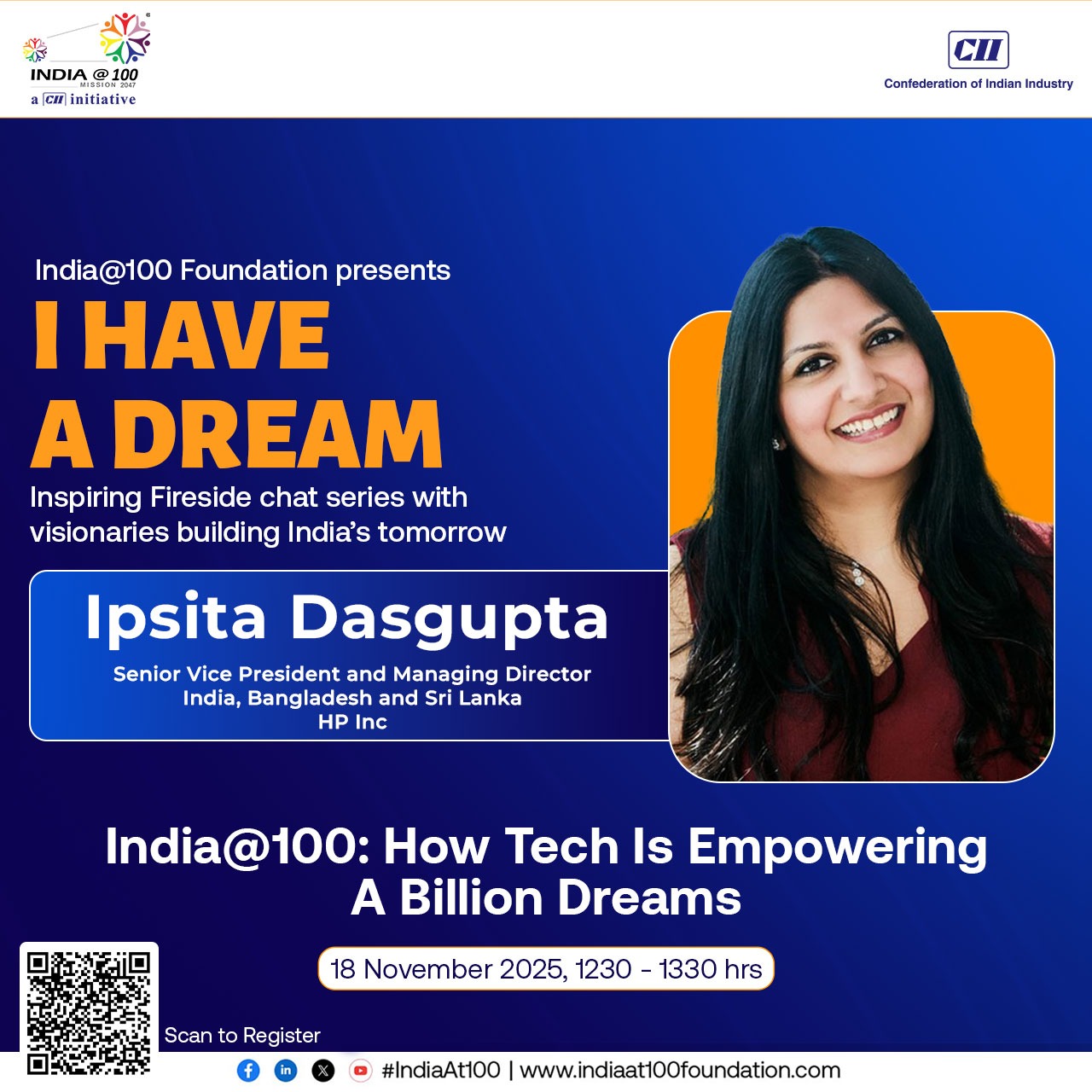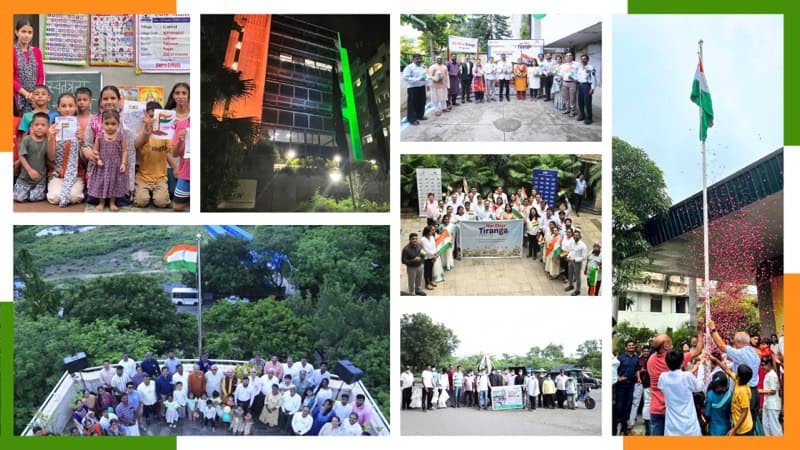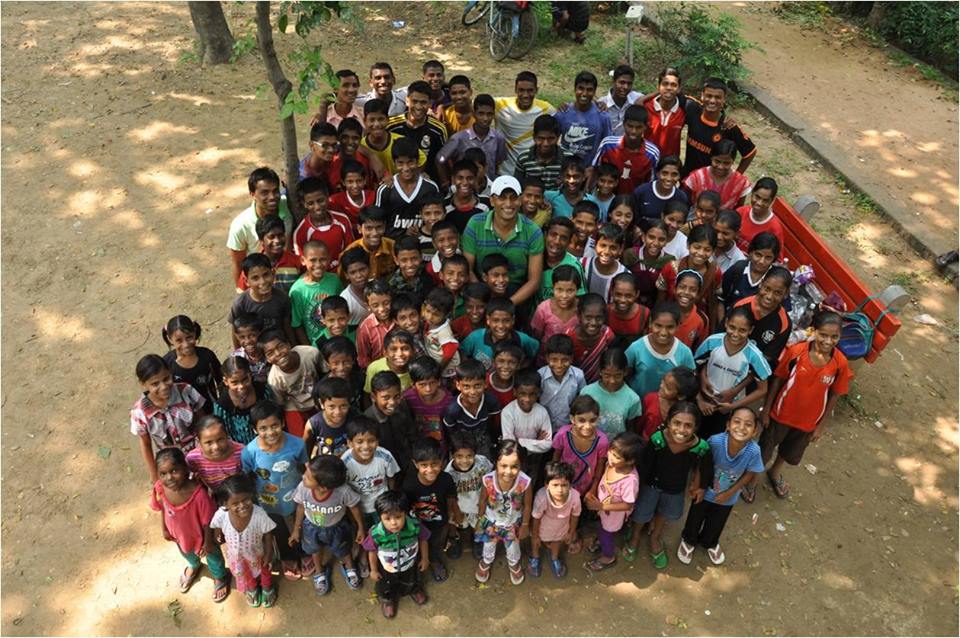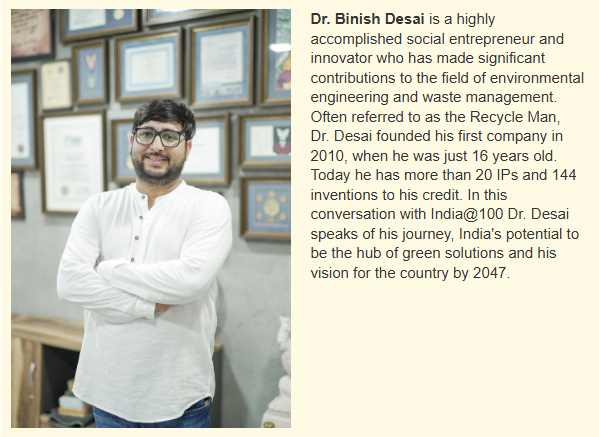
You’ve had an innovative bent of mind at early age of 11 – when you started with turning chewing gum into bricks. Can you take us back to that moment — what sparked your journey into waste innovation, and how did it shape your purpose early on?
Way before a piece of chewing gum got stuck to my pants, Captain Planet and Dexter’s Laboratory were my favourite cartoons. I always dreamt of having my own Dexter’s lab and helping my superhero, Captain Planet. That curiosity is what first sparked my interest in innovation.
In fact, my first invention came at the age of 10; I designed a machine that could convert water vapour from the kitchen into water for gardening, inspired by what I had just learned about evaporation and condensation.
Later, when I began working with paper mill waste, I realised just how many different types of waste were being generated without viable solutions. That insight pushed me to create my own lab focused on transforming various types of waste into ecological, economic, and socially impactful innovations.
Over the years, my experience working on projects in rural communities and collaborating with industries seeking sustainable solutions has helped me develop a more customised and unique approach to tackling waste-related challenges and help achieve closed loop solutions.
You are popularly known as the “Recycle Man of India.” What does that title mean to you in the broader context of India’s journey toward a circular economy?
Every title comes with a responsibility, and I’ve always tried to live up to the one given to me. Being called the “Recycle Man of India” is not just an honour; it’s a constant reminder of my duty to work on waste challenges that align with India’s vision for the world.
India has always had a deep-rooted culture of recycling, up-cycling, reusing, and repairing. I truly believe that India can lead the global movement towards a circular economy by drawing inspiration from our traditions, building technology locally, and offering those solutions globally. Through my work, I strive to contribute to this vision; by creating proudly made-in-India innovations that tackle global environmental challenges.
As someone working closely at the intersection of innovation and impact, what role do you see policy and governance playing in enabling green entrepreneurship at the grassroots level?
Government policymaking plays a pivotal role in enabling ecopreneurs. Initiatives like Swachh Bharat Abhiyan and Startup India have laid the foundation, but the real impact lies in integrating sustainability as a core focus across all policy verticals
With initiatives like LiFE (Lifestyle for Environment) and the Carbon Credit Program, the government is creating a strong push that will definitely encourage more people to engage in sustainable innovation.
To truly empower green entrepreneurship at the grassroots, we need inclusive frameworks that promote circular economy solutions, provide easier access to funding and infrastructure, and simplify compliance for eco-innovators. With the right policy support, local innovations can scale into global solutions; driving both environmental and economic progress.
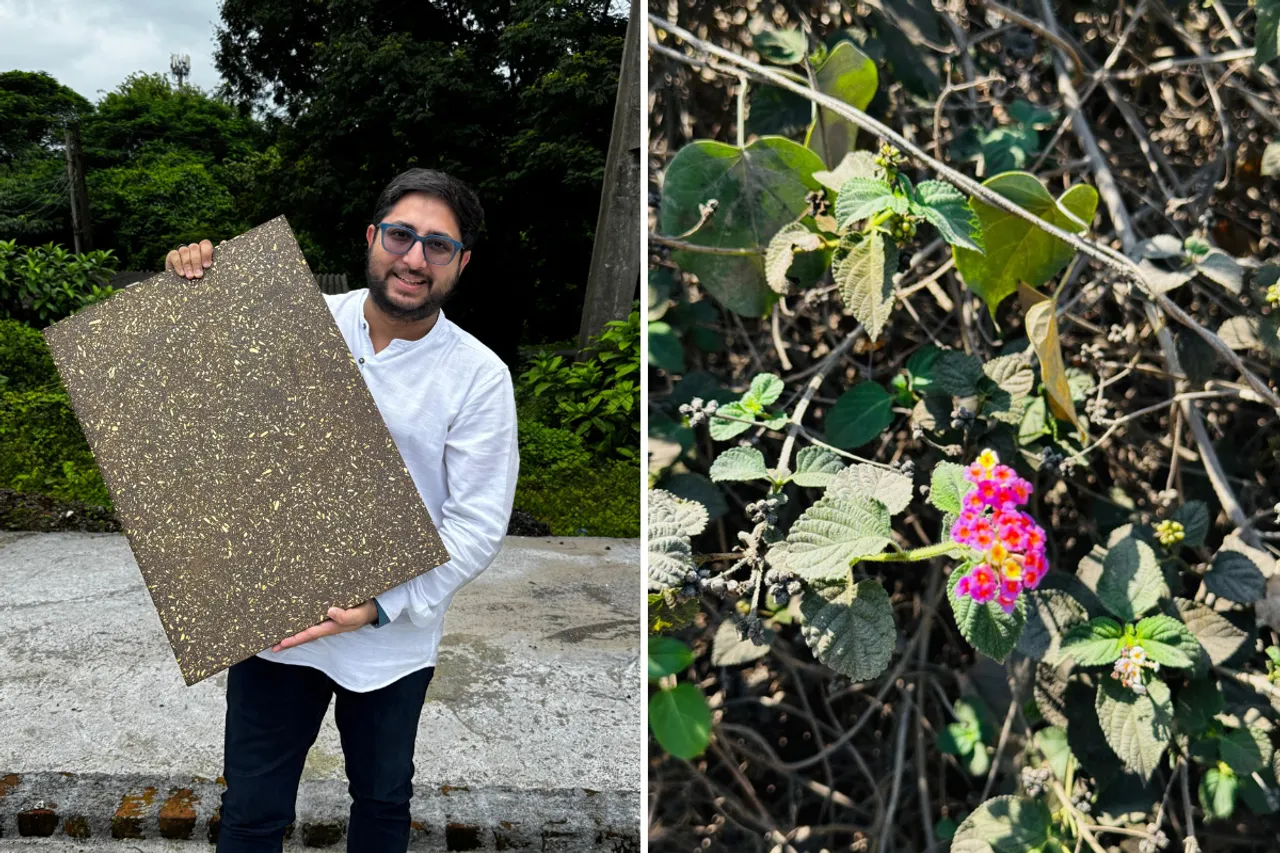 Dr. Desai has created Ecowood using the Lantana Camara weed (right)
Dr. Desai has created Ecowood using the Lantana Camara weed (right)
The term “Wastepreneurs” is gaining momentum. What role do you believe this new wave of entrepreneurs will play in shaping a sustainable and inclusive India@100?
I see this as a significant milestone. When I began my journey, waste was seen as a taboo; and today, seeing it become a trend and a recognised term is a powerful shift. Waste is no longer just a problem; it’s now a resource for innovation.
This new wave of entrepreneurs will be key to driving India’s transition towards a circular economy by creating scalable, low-cost, and socially inclusive solutions. While India does face a waste management challenge, our per capita waste generation is much lower than that of Western countries — and that gives
us a unique advantage if we act wisely. By turning local waste into economic opportunity, especially in rural and underserved areas, wastepreneurs will help build a sustainable and self-reliant India@100; one where impact and enterprise go hand in hand.
If we fast forward to 2047, the centenary of India’s independence –what kind of India do you envision: socially, environmentally, and economically?
By 2047, I envision an India that stands as a global leader in sustainability; not just environmentally, but socially and economically as well. Socially, I see an India where inclusivity is embedded in every system; where rural innovators, women, and marginalised communities are active drivers of progress, not just beneficiaries; where the rural economy is thriving and self-help groups have evolved into ‘micro social enterprises’; a dream we started with Eco Lights Studio, now the foundation of our brand Pushpam.
Environmentally, I dream of a nation where waste is no longer seen as a burden but as a raw material; powering a robust circular economy driven by indigenous innovation and traditional wisdom. An India where every village is self-sustaining and urban spaces are regenerative. Personally, it would be a dream to see viable solutions in place for all existing waste challenges; not just plastic, but other complex waste streams as well; and my lab (Reartham/NuoTerra) is actively working towards this vision
Economically, I see “Made in India” representing more than just manufacturing; it will stand for globally respected solutions born from local challenges. India will be known not just for its scale, but for its leadership in sustainability; where green jobs, green technologies, and green mindsets define our growth.
We are proud to have created one such technology; a Made in India solution to tackle the coal GOB (Garbage of Bituminous) crisis in the USA, by converting this massive waste into construction material.
In short, an India@100 where purpose and progress go hand in hand; where development doesn’t come at the cost of our environment or our values. India will be truly sustainable in all parameters; Pariyavaran Stir Atmanirbhar.
You began young and built a path that didn’t exist. What advice would you give to young changemakers today who want to innovate in the climate and sustainability space but are unsure where to begin?
My first advice to everyone is this: Buy only what you need; not what you want.
Go back to our roots; I always say, Indian moms are the biggest up-cyclers in the world; so learn from them. Don’t get greenwashed in a world where social media plays a huge role; ask the right questions. Just because something looks green doesn’t necessarily mean it’s sustainable; always do your research. I suggest a simple rule to follow:
• Observe – Observe a problem around you that needs attention. Fail – It is okay to fail; failure is the key to understanding how not to do something.
• Learn – Learn from your observations and failures.
• Solve – Collaborate; don’t compete; it’s the best way forward.
Then, assess yourself on three parameters; environmental, social, and economic impact. Only when there’s a balance of all three can something be considered truly sustainable.
When people ask me what success means to me, I say: The day I have no more waste left to work on, research, or innovate with; in short, when I become workless; that’s when I’ll consider myself successful. And in this process, I need everyone to join hands to help make that happen. Also remember; recycling is just one path to the solution. The real solution lies in going back to nature; where waste doesn’t exist.
Finally, remember the 8 R’s of sustainability: Refuse; Reduce; Reuse; Repair; Repurpose; Recycle; Rot; and Rethink. Nothing is useless in this world what’s a waste to you is someone’s asset.

